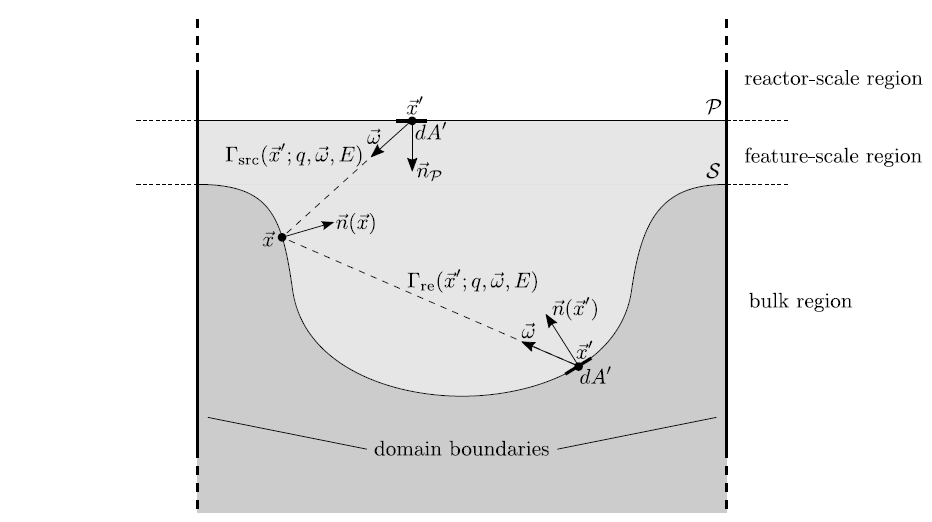In dry processes, where the wafer is exposed to a gas phase, the flux distribution of particles on the surface is usually the crucial factor for the local deposition or etching rates. Common models for the particle transport within the process chamber to the wafer surface divide the gas phase region by a plane
![]() just above the surface
just above the surface
![]() as depicted in Figure 2.1 [32,80]. A first model describes the transport within the reactor-scale region to
as depicted in Figure 2.1 [32,80]. A first model describes the transport within the reactor-scale region to
![]() and allows the determination of the flux distribution
and allows the determination of the flux distribution
 |
(2.3) |
A second model describes the continued particle transport from
![]() to
to
![]() within the feature-scale region using (2.2) as a boundary condition.
The advantage of dividing the gas phase region is that the particle transport acts on different length scales, and hence, different transport models can be applied to each region.
within the feature-scale region using (2.2) as a boundary condition.
The advantage of dividing the gas phase region is that the particle transport acts on different length scales, and hence, different transport models can be applied to each region.

|